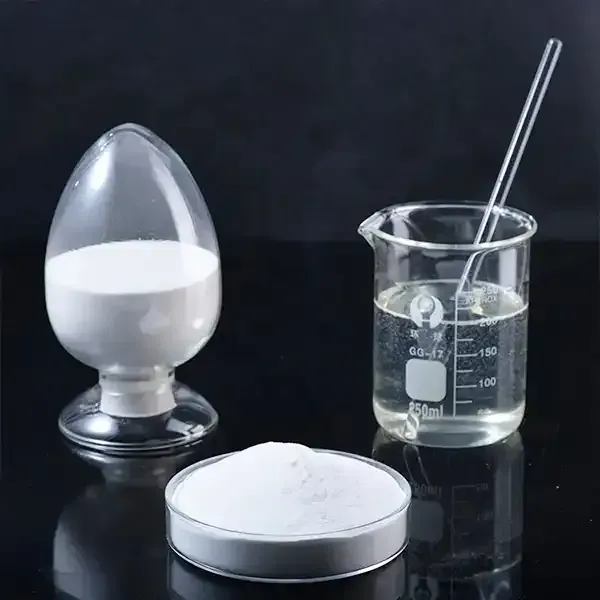Understanding Cellulose Ethers A Vital Component in Modern Applications
Cellulose ethers are a diverse group of synthetic derivatives of cellulose, one of the most abundant natural polymers on Earth. Derived from the cell walls of plants, cellulose serves as an essential structural component. By modifying cellulose through etherification, we obtain cellulose ethers with various functional properties that are critical in numerous industrial applications. This article explores the chemistry of cellulose ethers, their types, properties, and their significance in different sectors.
Chemistry and Types of Cellulose Ethers
Cellulose ethers are produced by chemically modifying cellulose through the reaction with etherifying agents, which can introduce various functional groups into the cellulose backbone. The most common cellulose ethers include methylcellulose (MC), ethylcellulose (EC), hydroxypropyl methylcellulose (HPMC), and carboxymethyl cellulose (CMC). Each type possesses distinct physical and chemical properties, making them suitable for specific applications.
For instance, methylcellulose is water-soluble and forms gels at elevated temperatures, making it ideal for use in food products as a thickener and stabilizer. On the other hand, carboxymethyl cellulose is used extensively in pharmaceuticals and cosmetics due to its excellent film-forming properties and water retention capability.
Properties and Functions
The unique properties of cellulose ethers are attributed to their chemical structure and the extent of substitution of hydroxyl groups on the cellulose molecule. These properties include solubility in water or organic solvents, viscosity, gel formation, and film-forming capabilities.
1. Solubility The solubility of cellulose ethers can be tailored by modifying the degree and type of substitution. For example, hydroxypropyl products are soluble in both cold and hot water, which allows for versatile applications.
2. Viscosity The viscosity of cellulose ethers can range from low to high, depending on their molecular weight and concentration. This property is vital in industries like food, where controlled viscosity enhances texture and mouthfeel.
3. Gel and Emulsion Formation Some cellulose ethers can form gels upon heating or in the presence of ions, making them essential in the food and cosmetic industries for stabilizing emulsions and improving product consistency.
cellulose ethers

4. Film-Forming Ability Cellulose ethers can form thin, flexible films, making them useful in coatings and as protective barriers in various applications, from pharmaceuticals to agriculture.
Applications Across Industries
The versatility of cellulose ethers allows for their application across various sectors, including food, pharmaceuticals, personal care, and construction.
- Food Industry They are widely used as thickening agents, emulsifiers, and stabilizers. For example, methylcellulose is popular in gluten-free products for its ability to mimic the texture of gluten, enhancing the quality of baked goods.
- Pharmaceuticals In the pharmaceutical sector, cellulose ethers serve as excipients in drug formulations, providing controlled release properties and improving the stability of active ingredients.
- Personal Care Products They are commonly found in cosmetics and personal care products like shampoos, lotions, and creams, where they act as binders, thickeners, and emulsifying agents.
- Construction In the construction industry, cellulose ethers enhance the workability and adhesion of mortars and plasters, improving the durability and performance of building materials.
Conclusion
Cellulose ethers represent a crucial class of materials with unique properties that cater to the evolving needs of modern industries. By leveraging the natural polymer cellulose, we can create versatile products that enhance various applications, from food and pharmaceuticals to construction and personal care. As research and development continue in the field of cellulose chemistry, the potential of cellulose ethers will likely expand, paving the way for innovative solutions that align with sustainability and efficiency goals in multiple sectors. Understanding and utilizing cellulose ethers is not just about enhancing performance; it is also about embracing environmentally friendly materials that contribute positively to our daily lives.
-
Rdp Powder: Key Considerations for Wholesalers in the Building Materials IndustryNewsJul.08,2025
-
Key Considerations for Wholesalers: Navigating the World of Hpmc - Based ProductsNewsJul.08,2025
-
Hpmc Detergent: Key Considerations for WholesalersNewsJul.08,2025
-
Key Considerations for Wholesalers: China Hpmc For Tile Adhesive, Coating Additives, Concrete Additives, and MoreNewsJul.08,2025
-
Crucial Considerations for Wholesalers: Navigating the World of Construction MaterialsNewsJul.08,2025
-
Key Considerations for Wholesalers Sourcing Additive For Cement, Additive For Concrete, Additive For Putty from Additive Manufacturer Shijiazhuang Gaocheng District Yongfeng Cellulose Co., Ltd.NewsJul.08,2025




